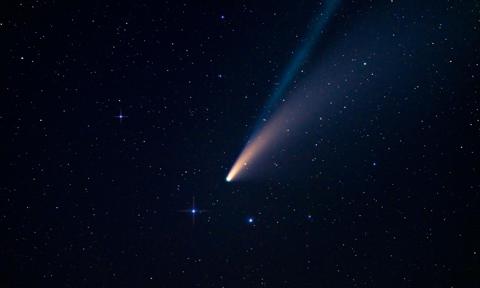
James Webb Space Telescope, one of the largest and most complex observatories launched into space, has released images of a mysterious comet which has water around it.
Named Comet 238P/Read, the new comet lurks in the main asteroid belt, between Mars and Jupiter, and could help reveal how we have water on Earth.
This is especially important and fascinating as this is the first time that water vapour has been detected around a comet in the main asteroid belt. Researchers working on the discovery have revealed that it shows that water in the early solar system could have been preserved as ice in the main asteroid belt.
“In the past, we’ve seen objects in the main belt with all the characteristics of comets, but only with this precise spectral data from the JWST can we say ‘yes,’ it’s definitely water ice that is creating that effect,” said Michael Kelley, the University of Maryland astronomer who led this research, in a statement, “With the JWST’s observations of Comet Read, we can now demonstrate that water ice from the early solar system can be preserved in the asteroid belt.”
A @NASAWebb finding is making a splash!
— NASA (@NASA) May 15, 2023
Water vapor was confirmed around a comet in the main asteroid belt for the first time, indicating that water from the primordial solar system can be preserved there. Is this a clue to the origin of Earth's water? https://t.co/Ms2cvX1eTLpic.twitter.com/d9OGrvFClx
The discovery further solidifies the theory that water on our planet could have come from space via comets.
Another fasicnating discovery that the reserachers have made about the comet is the absence of carbon dioxide. This is unusual as the compound has been present in other comets discovered in the area.
One of the most plausible theories is that the compound got boiled off by the heat of the sun. “Being in the asteroid belt for a long time could do it — carbon dioxide vaporizes more easily than water ice and could percolate out over billions of years,” wrote Kelley.
However, an alternate theory suggests that the comet could have been formed in an area that was devoid of carbon dioxide.
The discovery by the James Webb Space Telescope is incredible and could shed a lot of light into the history of water distribution in our solar system and if there is another Earth-like planet out there or not.
- Quick links
- Space
- Space Telescope






